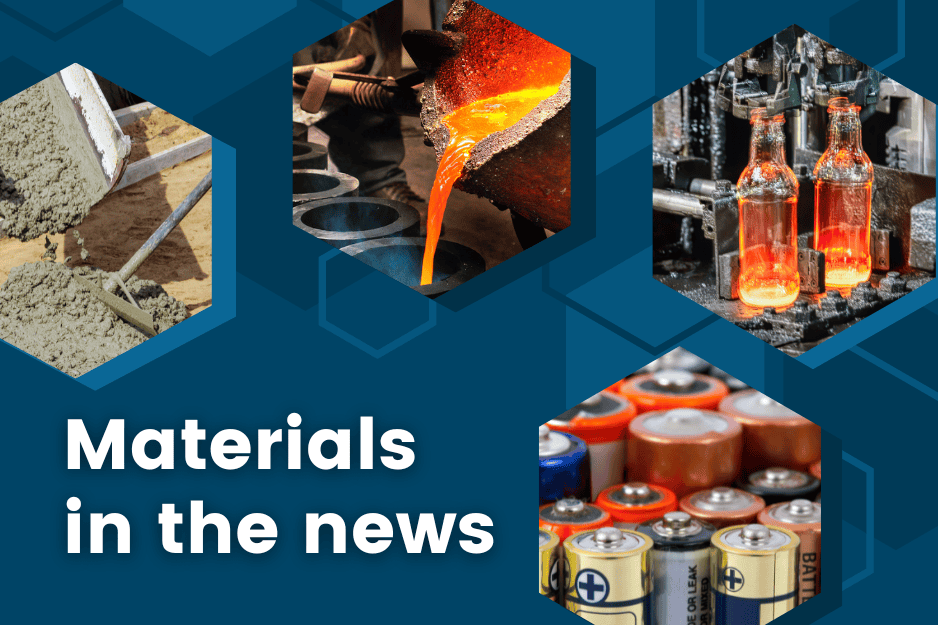
[Image above] Credit: ACerS
ENERGY
Concrete spheres sunk deep in oceans may store renewable energy at scale
Since 2011, Fraunhofer Institute researchers have deployed giant hollow concrete spheres sunk hundreds of feet beneath the ocean surface to investigate how deep-sea pressure can be harnessed to store energy in the short to medium term.
Hybrid anode material for lithium-ion battery technology
Researchers from Dongguk University and Kyungpook National University developed a novel anode material consisting of reduced graphene oxide with nickel–iron layered double hydroxides. The graphene oxide provides a conductive network for electron transport, and the metal hydroxides enable fast charge storage through a pseudocapacitive mechanism.
PNNL exhibits latest energy research at 2025 ARPA-E Energy Innovation Summit
Pacific Northwest National Laboratory researchers participated in the Energy Innovation Summit of the Advanced Research Projects Agency–Energy in March 2025. The annual three-day event showcases the latest developments in energy technology. The PNNL projects on display at the event included several uses of artificial intelligence to improve system efficiency.
BIOMATERIALS
Scientists can now 3D print tissues directly inside the body—no surgery needed
California Institute of Technology researchers unveiled a system to 3D print tissues inside the body. The system uses an injectable bioink that is liquid at body temperature but solidifies into structures when blasted with ultrasound. A monitoring molecule, also sensitive to ultrasound, tracks tissue printing in real time. Excess bioink is safely broken down by the body.
Long-term study shows 92% success rate for 3D-printed bioceramic patient-specific implants
Lithoz’s first long-term study on its additively manufactured, patient-specific tricalcium phosphate implants showed a total success rate of more than 92%. Prior to this study, surgeons had yet to find an ideal solution to the postoperative development of mandibular lower border defects and irregularities following bilaterial sagittal osteotomy.
ENVIRONMENT
Scientists define the ingredients for finding natural clean hydrogen
Researchers at the University of Oxford, Durham University, and the University of Toronto detailed the geological ingredients required to find clean sources of natural hydrogen beneath our feet.
Agrivoltaics enjoys comparatively high acceptance
University of Bonn researchers surveyed almost 2,000 people in Germany and found that agrivoltaics met with much higher acceptance compared to conventional solar parks.
Nanoplastics in the environment could turn E. coli into a bigger villain
University of Illinois Urbana-Champaign food scientists found that certain nanoplastics may make foodborne pathogens more virulent by causing physiological stress. Stressed bacteria pump out more Shiga-like toxin, the chemical that causes illness in humans.
MANUFACTURING
Team develops digital lab for data- and robot-driven materials science
Researchers at the University of Tokyo and their collaborators developed a digital laboratory system that fully automates the material synthesis and the structural and physical property evaluation of thin-film samples.
New technique levels up the industrial-scale production of electronic thin films
Researchers led by Massachusetts Institute of Technology, Rensselaer Polytechnic Institute, and the University of Wisconsin-Madison developed a new, efficient technique for peeling ultrathin crystalline electronic membranes away from their substrates.
OTHER STORIES
Rare activated carbon structure derived from coconut waste
Amrita Vishwa Vidyapeetham researchers derived a rare activated carbon structure—previously only seen in theory—from rachis, the thick central stem of the coconut frond. This structure can store 47% more energy than activated carbon derived from coconut shells, the industry gold standard.
Individual layers of synthetic materials collaborate for greater impact
Researchers led by the University of Illinois Urbana-Champaign and the Technical University of Denmark developed a framework for programmable multilayered materials capable of responding to local disturbances through microscale interconnections.
Self-healing grout could extend lifespan of bridges and dams
Researchers at the University of Cordoba developed a grout capable of self-repairing cracks using crystalline additives. While these additives have already been studied in concrete and mortar, this study is the first time their use in cement-based grouts was explored.
Author
Lisa McDonald
CTT Categories
- Weekly Column: “Other materials”
Related Posts
Other materials stories that may be of interest for November 5, 2025
November 5, 2025
Other materials stories that may be of interest for October 29, 2025
October 29, 2025
Other materials stories that may be of interest for October 22, 2025
October 22, 2025